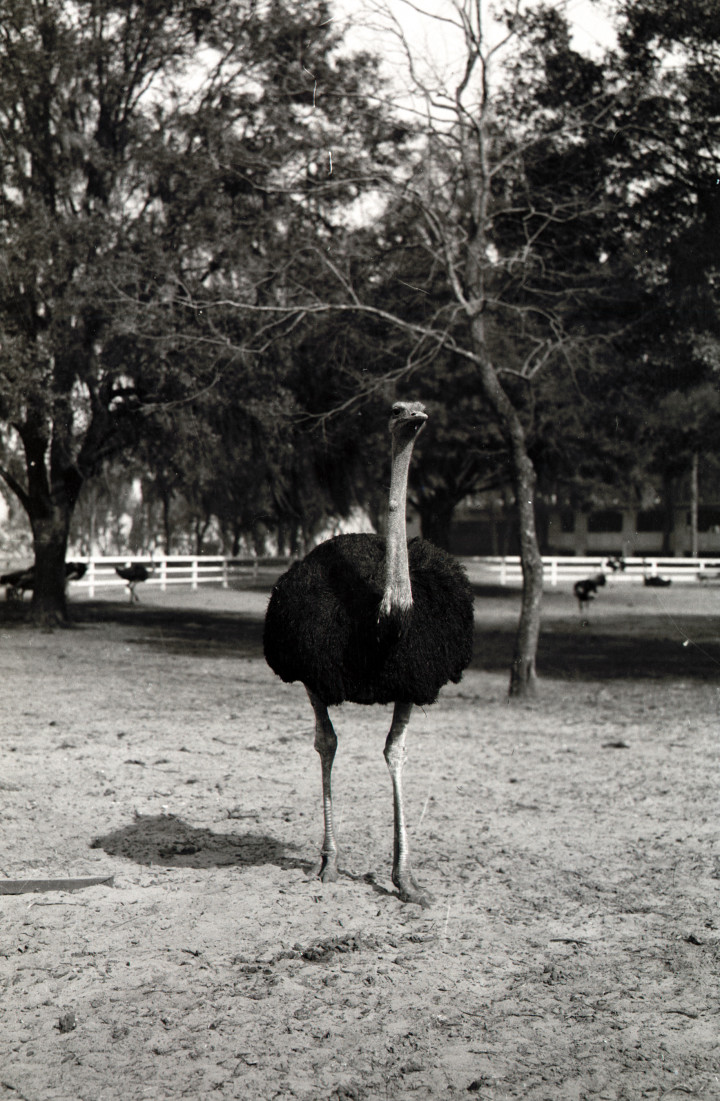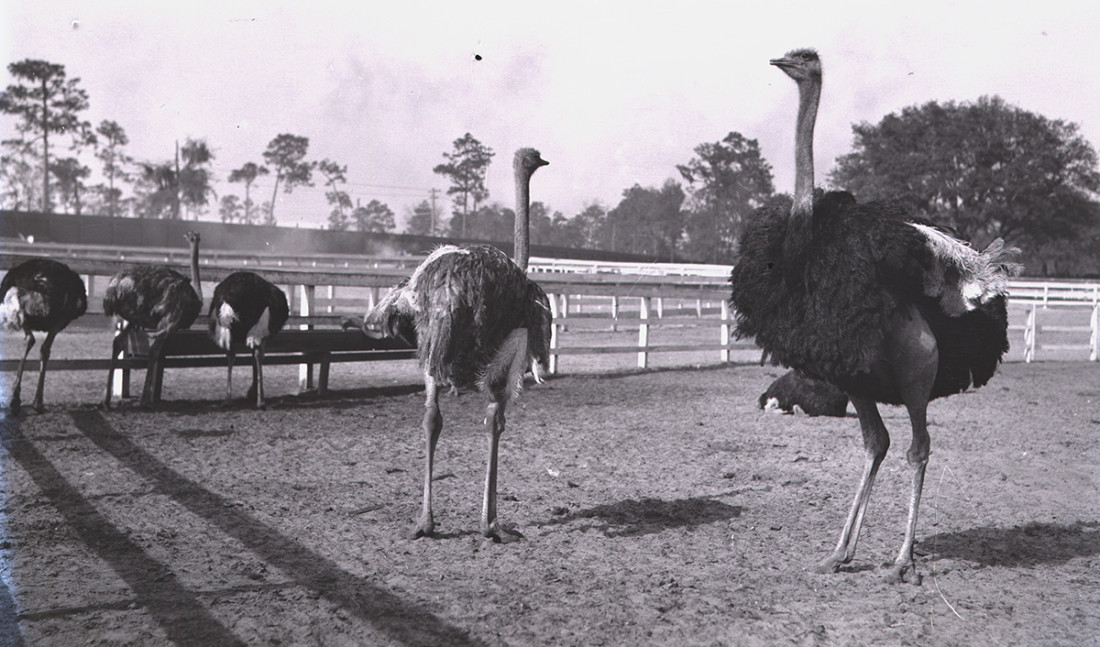On April 8, 1902, The Asheville Citizen made it known that indeed, the rumors were true: “The establishment of an ostrich farm here, rumored long ago, has become a certainty, and as soon as the weather permits work on the enclosure for the feathered denizens of the plains will begin, according to the present plans.”
The property, located on the corner of Merrimon and Coleman avenues, was established by A.Y. Pearson. On June 21, 1902, The Asheville Gazette ran a preview of its operations. The article, titled “Asheville’s Ostrich Farm And Its Silly Inhabitants,” informed readers that:
“On entering [the farm] one is possessed somewhat with the feeling of childhood days when one listened to the big brass band and walked proudly through the entrance of the circus tent to behold the world renowned specimens of the animal kingdom, captured and brought across the ocean at an enormous expense, where size was not insignificant in comparison with the mightiest giants of old that existed upon the earth.”
According to the article, the annual cost to raise an ostrich was $5. Meanwhile, the annual profit per ostrich was $45. Feathers clipped from the creatures’ wings and tails brought in between $60 and $225 per pound. The article went on to note, “The male birds are most valuable, for the black and white feathers bring the most on the market.”
On July 1, 1902, the farm officially opened to the public. Admission was 25 cents. Children under 10 entered free. Advertisements placed in numerous papers announced that the property’s birds were “full grown South African Ostriches.” These same advertisements also highlighted the farm’s 5-week-old baby chicks, as well as the property’s “large assortment of Plumes, Boas, Fans, Pompons, and other feather ornaments of only the best grade of feathers at producer’s prices.”
Sadly, tragedy would strike one of the farm’s birds. On Sept. 13, 1902, The Asheville Gazette’s headline read “Favorite Ostrich Has Passed Away.” In the article, the newspaper reported:
“There is sorrow among the attendants at Asheville’s ostrich farm, located just north of the city. ‘Oliver W.,’ the famous racing ostrich, formerly a resident of the farm, is no more. Oliver W. was hitched to a light buggy down in Jacksonville a couple of days ago. The huge bird had no trouble in handling the vehicle, but he got tangled up in some of the harness and kicked himself to death. The average ostrich has no more sense than a plank …”
Days later, on Sept. 18, the same newspaper featured an article about a stampede on the Asheville farm:
“A small boy … ran in front of the farm fence, throwing every ostrich into a panic of fear, as they are not accustomed to such sights. It seems that the ostrich has little fear of man or any large animal but they look with instinctive dread upon a child cat or small dog.”

By year’s end, The Asheville Gazette reported yet another mishap between bird and man. A headline in its Dec. 16, 1902, article read, “Mr. Duval’s Narrow Escape From Death.” According to the paper:
“At 3:30 o’clock Sunday Mr. Duvall, superintendent of the Asheville ostrich farm, was awaked by a loud noise, like the pounding and splintering of boards. He was quickly at the scene of the commotion and found one of the 400-pound cocks lying in the pen on its side with its ponderous legs working like piston rods, breaking up a large feed trough, which it had in some way turned over on itself.”
Duvall freed the bird, but not without acquiring bruises. In the article, the reporter characterized the event as “one of the narrowest escapes from death.” The newspaper went on to quote Duvall, who said, “I was kicked half way across the pen in among the rest of the herd of birds in the barn and lay there partially unconscious in the dark for fully five minutes with 25 birds tramping all around me.”
The injury, however, would not disrupt or dissuade Duvall’s dedication to the birds. A week later, on Dec. 23, The Asheville Gazette reported:
“One of the large birds at the ostrich farm was found yesterday morning with its osophagns cut open. The gash extended along its throat, laying the tube completely open. The ostrich was suffering much. It is supposed that the wound was received from the claw of one of the other birds during the night. Mr. Duvall performed an expert piece of surgery in sewing up the wound, without giving the bird an anesthetic. The ostrich will probably recover.”
Editor’s note: Peculiarities of spelling and punctuation are preserved from the original documents.




Before you comment
The comments section is here to provide a platform for civil dialogue on the issues we face together as a local community. Xpress is committed to offering this platform for all voices, but when the tone of the discussion gets nasty or strays off topic, we believe many people choose not to participate. Xpress editors are determined to moderate comments to ensure a constructive interchange is maintained. All comments judged not to be in keeping with the spirit of civil discourse will be removed and repeat violators will be banned. See here for our terms of service. Thank you for being part of this effort to promote respectful discussion.